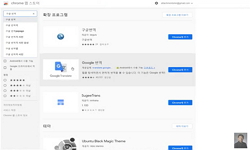This paper addresses the features of Korean-English machine translations by the Google Translate and Papago translation engines, focusing on the English translation of Korean dual subject sentences. The analysis of the English translations of Korean s...
http://chineseinput.net/에서 pinyin(병음)방식으로 중국어를 변환할 수 있습니다.
변환된 중국어를 복사하여 사용하시면 됩니다.
- 中文 을 입력하시려면 zhongwen을 입력하시고 space를누르시면됩니다.
- 北京 을 입력하시려면 beijing을 입력하시고 space를 누르시면 됩니다.

기계번역에서 이중주어 구문의 한영 번역 양상 - 구글 번역과 네이버 파파고의 법조문 번역 사례 비교 - = A case study of Korean-English machine translation of dual subject sentences: A comparison of statutory translations by Google Translate and Naver Papago
한글로보기https://www.riss.kr/link?id=A108220922
- 저자
- 발행기관
- 학술지명
- 권호사항
-
발행연도
2022
-
작성언어
-
- 주제어
-
KDC
700
-
등재정보
KCI등재
-
자료형태
학술저널
-
수록면
211-241(31쪽)
- DOI식별코드
- 제공처
- 소장기관
-
0
상세조회 -
0
다운로드
부가정보
다국어 초록 (Multilingual Abstract)
This paper addresses the features of Korean-English machine translations by the Google Translate and Papago translation engines, focusing on the English translation of Korean dual subject sentences. The analysis of the English translations of Korean statutes consisting of 41 dual subject clauses reveals some similarities between human translation and machine translation. In human translations, either N1 or N2 of the source text served as the subject and N1 was often omitted in the English translation, whereas in machine translations, either N1 or N2 of the source text was translated into the subject and N1 was often omitted when N2 served as the subject in the English translation. However, machine translations differed from human translations in that machine translations unduly omitted N1 or N2 and the syntactic structure of machine translations was not as diverse as that of human translations. This study also suggests that machine translations produced by the two distinct engines were similar in terms of the usage of N1 and N2 in the English translation. Given that this paper is based on a small-scale pilot study, further research is needed to corroborate the findings drawing on diverse texts containing dual subject clauses. (Ewha Womans University, Korea)
동일학술지(권/호) 다른 논문
-
텍스트 마이닝 기법을 활용한 번역가 문체 분석 - ‘as if’ 구문 번역을 중심으로 -
- 이화여자대학교 통역번역연구소
- 신혜정
- 2022
- KCI등재
-
- 이화여자대학교 통역번역연구소
- 지윤주
- 2022
- KCI등재
-
법률 특화 번역엔진 성능 평가 - 한영 계약서 번역을 중심으로 -
- 이화여자대학교 통역번역연구소
- 이준호
- 2022
- KCI등재
-
문학 번역서 곁텍스트 재정의와 하퍼 리의 「앵무새 죽이기」 주변텍스트 통시적 사례 연구
- 이화여자대학교 통역번역연구소
- 이지민
- 2022
- KCI등재




 RISS
RISS KISS
KISS






